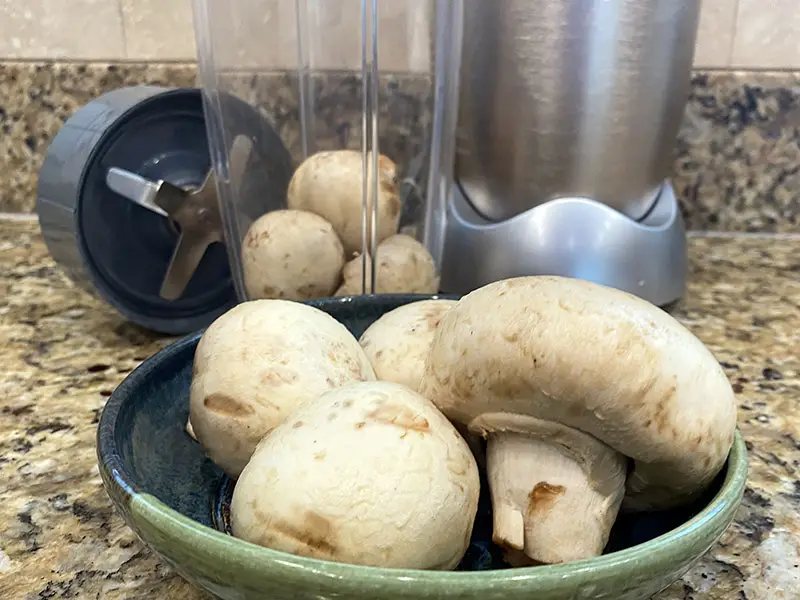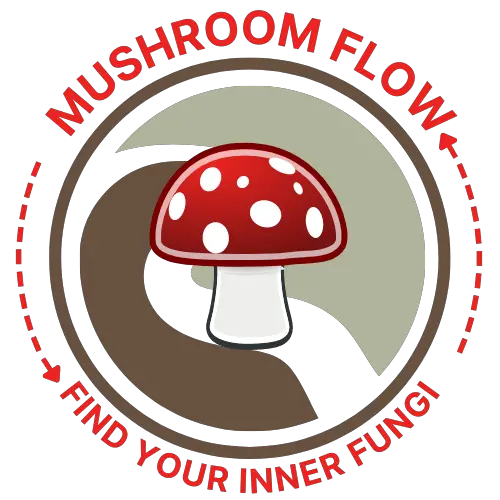When you hear the word juice, you probably think orange, apple, carrot, greens, and several other veggies, but mushroom juice? Even though mushrooms are 80% to 90% water, I hadn’t heard of extracting juice from them. So, is it possible to juice mushrooms?
Yes, you can juice mushrooms. Mushroom juice is high in protein, a good source of fiber, low in calories, cholesterol-free, and provides a unique flavor profile in various recipes.
There is all manner of mushroom supplements, powders, extracts, coffees, chocolates, and teas on the market today, to name just a few uses. Let’s look at some ways to make your own, fresh mushroom juice to add to your recipes.

Selecting Mushrooms
Whether you’re at the store or the farmer’s market select mushrooms that show no signs of discoloration or black spots. Fresh mushrooms should not feel slimy. The skin should be dry but not dried out. If you cannot use them right away, keep mushrooms in a cold part of your refrigerator stored in a paper lunch bag. It’s best to juice mushrooms as soon as possible, within a week of purchasing or harvesting (the sooner, the better!).
Can you Juice Raw or Cooked Mushrooms?
You can juice several types of either raw or cooked mushrooms including:
- Button
- Chanterelle
- Cremini
- Enoki
- Lion’s mane
- Maitake
- Morel
- Oyster
- Porcini
- Portabello
- Shiitake
And many more types of mushrooms not listed above can be juiced. If possible, organic mushrooms are preferred for juicing.
Sample Raw Mushroom Juice Recipe
As a juice enthusiast, I set out to add mushrooms’ benefits to some of my favorite juices. In this case, you are not extracting or creating a liquid from the mushrooms, but rather adding them to another liquid for their nutritional value. To two ounces of carrot juice add one whole mushroom, 1 tsp. Cocoa powder, 1 tsp. Honey, and 5 ounces of soy milk. Run through the blender thoroughly. This juice should be consumed fresh. If you want a smoother texture, strain it through a fine sieve or try using a juicer.
There are several types of juicers that will work to varying degrees. For example, if you want simple juice extraction without fiber then a Breville Juice Fountain centrifugal juicer would be a good option. A centrifugal juicer makes quite a bit of noise but produces juice quickly. Another option is the Omega Slow Masticating Juicer for a quieter, slow juicing experience with optimal nutrition retention. There are many other juicers like the ones listed here so it’s good to do research and select the juicer that fits your juicing needs.
What about Using Dry Mushrooms?
You can absolutely use the liquid from dehydrated mushrooms as juice. You may even be able to use the resulting broth in the dish intended for the mushrooms themselves. You’ll also need to carefully strain the water since it will have mushroom grit at the bottom of the catching container. Coffee filters work great for this purpose.
Powdered Mushrooms
Dehydrated, powdered mushroom is perhaps the easiest way to get all the benefits of mushroom juice without the mess. You simply add some to whatever beverage or food you’re making!
Do I Wash or Peel the Mushrooms Before Juicing?
Mushroom skin is sensitive and porous. It’s best to use a small brush (like a toothbrush) to get off any dirt. Or, take a damp paper towel and wipe them off. There is no need to peel them.
How do you Juice Mushrooms?
One of the most common ways of making mushroom juice is by steaming. For this, you’ll need a sieve or fine strainer, water, a cooking pot, a kitchen knife, and a spoon.
- Boil some water. Use enough water so that you know it will cover your mushrooms completely when added to the pan.
- Boil the mushrooms until they separate easily if you pull them apart.
- Let these cool a bit for handling.
- Dice the mushrooms into ¼ pieces.
- Put the mushrooms through a sieve or strainer.
- Using the back of a spoon, push the mushrooms through the strainer. You’re making something akin to a puree.
- From here you can add more water to reach whatever consistency you want. It should match the liquid level of the food/beverage to which you’re adding it.
Sweet or Savory?
Surprisingly, mushroom juice is versatile. You can use it in sweet preparations. In many instances, no one will know the shroom juice is in there! For example, it could be a component in a cranberry tart, walnut cheesecake, or fruit smoothie.
Having said that, a lot of people find it easier to work on the savory side. Making mushroom scraps into a hardy broth is a good example. All you need are some vegetables (like onion and celery), herbs, water, and mushrooms. Toss everything into a slow cooker and let it cook for the specified recipe cooking time. Once it’s done cooking you have a wonderful broth perfect for soup making.
Tip: Keep a freezer-safe, food storage bag in the freezer and put your vegetable ends and pieces in it. Take this out and use it any time for making broth.
Using the Liquid from Mushrooms
You’re about to stretch your mushroom culinary vocabulary. You can use a mushroom liquid like you might soy sauce because it has an umami flavor profile. Use it for udon, risotto, pan sauce, or stew. The most important thing to remember is that mushroom juice is not meant to be the primary cooking liquid in any dish. It’s a background player, akin to a condiment.
Mushroom Juice in Mushroom Ketchup’s History.
The process of making mushroom ketchup dates back to around the 1700s, and it really begins with mushroom juice. People packed whole, salted mushrooms in containers. Over time, the mushrooms gave up all their juices. Afterward, the mushrooms were cooked and finished with spices. The left-behind juice was dark brown and edible, but very salty.
What are the Benefits of Mushroom Juice?
Mushroom juice packs a nutritional wallop that supports your immune system. It has vitamins, minerals, and antioxidants in abundance. Let’s examine the other health benefits of mushroom juice as put forward by studies thus far:
- Hearth Health: Mushrooms are high in potassium which supports the nervous system, heart, kidneys, and muscles to name just a few.
- Feeding your skin: Skin is the largest organ of the body, and the antioxidants in mushroom juice can help slow the visible signs of aging.
- Brain Gain: the polyphenols in mushroom juice may help protect against early cognitive decline in aging adults.
- Energy: Mushroom juice contains Vitamin B1, B2, B3, B5, and B9 which improves your body’s ability to use energy effectively.
Final Thoughts
If you enjoy the flavor of mushrooms, juicing them might be the ideal way to get the nutritional value of mushrooms.
There’s no question mushroom juice is a healthy addition to one’s diet. Making it at home is inexpensive. You also get the greatest health value out of the juice because it’s fresh.
Parting words of caution, don’t harvest wild mushrooms unless you’ve been fully trained in plant recognition or you’re in the company of an experienced Mycologist who can help you identify what’s safely edible and what’s potentially harmful.
